Impact of Temperature on EV Range
Electric vehicles (EVs) have revolutionized the automotive industry, offering a sustainable alternative to traditional gasoline-powered cars. However, as with any technology, EVs come with their own set of challenges. One of the most discussed topics among EV enthusiasts and critics alike is the impact of temperature on EV range. This article delves deep into the intricate relationship between temperature and the performance of electric vehicles.
“Temperature fluctuations can significantly affect the range of an electric vehicle, making it crucial for EV owners to understand the underlying factors.” – Geotab
Correlation Between Cold Weather and Battery Efficiency
At the heart of every electric vehicle lies its battery, a crucial component that determines the vehicle’s range and overall performance. Cold weather, particularly temperatures below freezing, can have a profound impact on battery efficiency. Chemical reactions within the battery, responsible for generating electricity, slow down in colder temperatures. This reduction in reaction rates leads to a decrease in the battery’s capacity and, consequently, the vehicle’s range. A study by InsideEVs found that some EVs could experience up to a 35% reduction in range during freezing conditions.
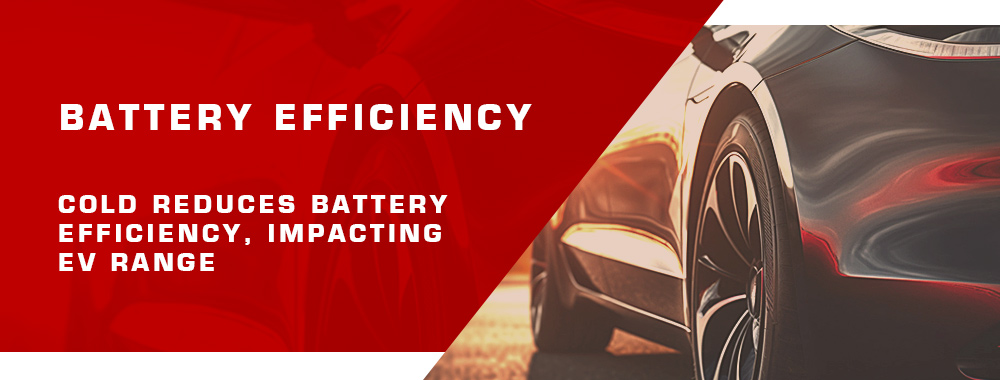
Thermal Management Systems in EVs
Recognizing the challenges posed by temperature fluctuations, modern EVs are equipped with advanced thermal management systems. These systems regulate the temperature of the battery, ensuring it operates within an optimal range. By circulating coolants and using heating elements, these systems can mitigate the adverse effects of extreme temperatures, enhancing battery performance and longevity. However, it’s worth noting that while these systems are effective, they also consume energy, which can slightly offset the benefits in terms of range.
Role of Ambient Temperature in Energy Consumption
Ambient temperature doesn’t just affect the battery directly; it also influences the energy consumption of various auxiliary systems in the vehicle. For instance, on a cold day, more energy is expended on heating the vehicle’s interior, which can further reduce the available range. Conversely, on a hot day, the air conditioning system can draw significant power. Understanding the balance between ambient temperature and auxiliary energy consumption is crucial for maximizing an EV’s range.
Good to Know Fact
Did you know that pre-conditioning your EV while it’s still plugged in can help mitigate range loss? By warming up the battery and the vehicle’s interior before starting your journey, you can conserve battery energy for driving.
Cold Drains EV Range!
Attention EV Owners! While temperature plays a significant role in your vehicle’s range, driving habits, tire pressure, and even the weight of onboard cargo can also influence it. Stay informed and drive smart to get the most out of your EV!
EV Range Reduction Factors in Winter
Based on our firsthand experience, we can conclude that winter does indeed pose a unique set of challenges for electric vehicle (EV) owners. As temperatures plummet, various factors come into play that can noticeably diminish an EV’s range. Drawing from our experience and real feedback from our clients, this section aims to shed light on the main factors contributing to this range reduction, while also offering practical insights and solutions for those passionate about EVs.
Effects of Heating Systems on EV Range
Staying warm and comfortable is a priority for drivers in cold climates. However, the heating systems in EVs can be energy-intensive. Unlike traditional vehicles that utilize waste heat from the engine, EVs rely on electric heaters to warm the cabin. This direct consumption of electricity for heating can lead to a noticeable reduction in range. According to a report by U.S. Department of Energy, the use of heating systems can decrease the total EV range by up to 25% in extremely cold conditions.
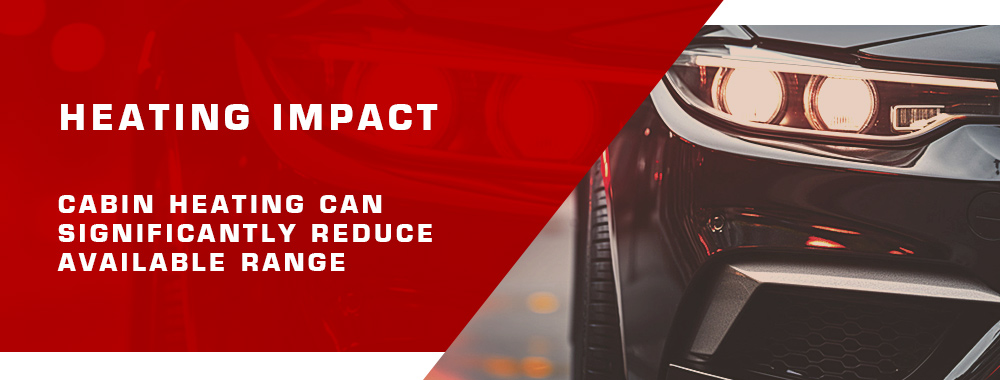
Increased Rolling Resistance in Cold Conditions
Rolling resistance refers to the force resisting the motion of a tire rolling on a surface. In colder temperatures, tires tend to become stiffer, leading to increased rolling resistance. This means the EV has to work harder, consuming more energy to maintain the same speed. Furthermore, cold air is denser, adding to the aerodynamic drag on the vehicle. The combined effect of these factors can lead to a significant reduction in range, especially during highway driving where aerodynamic drag plays a more pronounced role.
Winter Tire Impact on Energy Consumption
Winter tires, designed to provide better traction in snowy and icy conditions, can also influence an EV’s range. The softer rubber compounds and aggressive tread patterns, while excellent for grip, can increase rolling resistance. A study by Green Car Reports highlighted that switching to winter tires could result in a range reduction of up to 12%. Therefore, while winter tires are essential for safety in cold climates, EV owners should be aware of their impact on range.
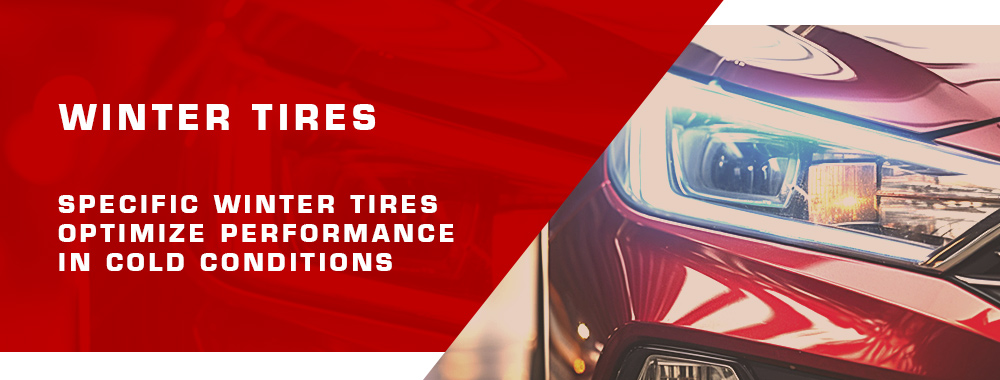
Good to Know Fact
Regenerative braking systems in EVs can be less effective in cold weather. This is because the battery’s ability to accept charge from regenerative braking decreases with temperature, leading to reduced energy recovery.
Warm Up, Save Energy!
Quick Tip for EV Owners! Consider using seat heaters instead of the cabin heater when possible. Seat heaters consume less energy and can keep you warm without significantly impacting range!
Optimizing EV Range During Cold Months
As electric vehicles (EVs) continue to gain traction worldwide, understanding how to optimize their performance in varying conditions becomes paramount. Cold months, in particular, can be challenging for EV owners due to the range reduction factors associated with lower temperatures. However, with the right strategies and knowledge, it’s possible to mitigate these challenges and get the most out of your EV even in the chilliest conditions.
Pre-conditioning Strategies for EVs
Pre-conditioning is a proactive approach to prepare your EV for the journey ahead. By warming up the battery and the vehicle’s interior while it’s still plugged in, you can conserve battery energy for driving. This strategy is especially effective during cold months, as it reduces the need for energy-intensive heating once on the road. Many modern EVs come with smartphone apps that allow owners to schedule pre-conditioning, ensuring the vehicle is warmed up and ready to go by the time they are. According to Electrive, pre-conditioning can improve winter range by up to 15%.
Benefits of Insulated Battery Packs
Insulation isn’t just for homes; it’s also beneficial for EV battery packs. An insulated battery pack helps maintain an optimal temperature, ensuring efficient performance even in cold conditions. By reducing the battery’s exposure to external temperature fluctuations, insulation can enhance its longevity and consistent output. Some leading EV manufacturers have recognized this benefit and are now incorporating advanced insulation materials into their battery designs, offering a more consistent range throughout the year.
Driving Habits to Maximize Winter Range
Your driving habits play a pivotal role in determining the range of your EV, especially during colder months. Smooth acceleration, maintaining a steady speed, and avoiding sudden braking can significantly improve energy efficiency. Using features like regenerative braking can also help recapture energy, further optimizing range. Additionally, reducing the use of high-energy-consuming features like rear window defrosters and maximizing the use of seat heaters over cabin heaters can make a noticeable difference. A report by EVANNEX suggests that adapting driving habits can lead to a range improvement of up to 20% in cold conditions.
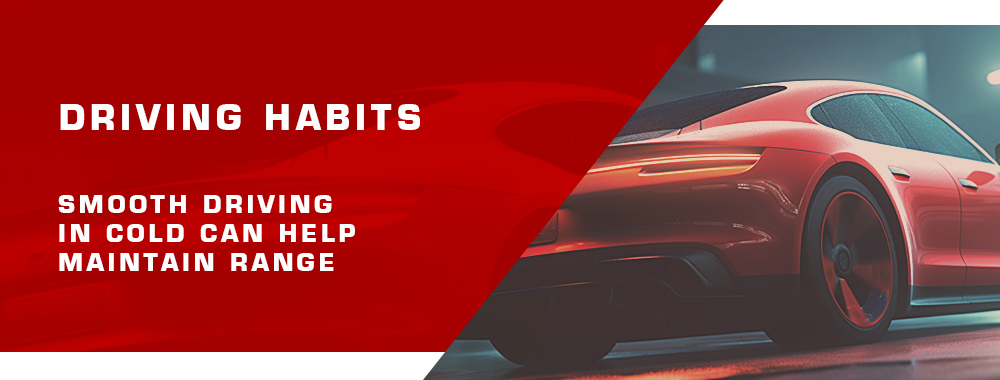
Good to Know Fact
- Many EVs come with ‘Eco’ modes that optimize various vehicle parameters for maximum efficiency. Engaging this mode, especially during winter, can help in further extending the range.
EVs’ Cold Weather Secret!
Did You Know? Some EVs come equipped with heat pumps, a more energy-efficient alternative to resistive heaters. Heat pumps can significantly reduce energy consumption for cabin heating, giving you those extra miles in the cold!
Comparative Analysis of EV Models in Cold Weather
Electric vehicles (EVs) have become a staple on roads worldwide. However, as with any vehicle, performance can vary based on numerous factors, including environmental conditions. Cold weather, in particular, poses a unique set of challenges for EVs. This section offers a comparative analysis of various EV models, highlighting their performance metrics in colder climates and providing insights for potential buyers and enthusiasts.
Top Performing EVs in Low Temperatures
Not all EVs are created equal, especially when it comes to cold weather performance. Some models are specifically designed with features that enhance their efficiency in colder climates. For instance, the Tesla Model 3 boasts a sophisticated thermal management system, ensuring optimal battery performance even in sub-zero temperatures. On the other hand, the Nissan Leaf, with its air-cooled battery system, might experience more significant range reductions in colder conditions. It’s essential for potential buyers to consider these variations when choosing an EV suitable for their regional climate.
Range Variability Among Different EV Brands
Brand reputation and technology play a pivotal role in determining an EV’s performance in cold weather. Brands like Tesla and Audi, with their advanced thermal management systems, tend to fare better in colder conditions compared to some other brands. However, newer entrants in the EV market, such as Rivian and Lucid, are introducing innovative technologies that promise to bridge this gap. A study by CleanTechnica highlighted that while there’s variability in range across brands, advancements in battery technology are steadily reducing these disparities.
Real-world Test Results of EVs in Winter
While laboratory tests provide valuable data, real-world testing offers insights that are often more relevant to the average driver. Various independent agencies and enthusiasts conduct winter tests, driving EVs under typical winter conditions to gauge their performance. For instance, the Edmunds winter test of multiple EV models revealed that while most EVs experienced a range reduction in cold weather, the degree of reduction varied significantly across models. Such real-world tests are invaluable for potential buyers, offering a practical perspective on what to expect from their EVs in winter.
Good to Know Fact
Charging speeds can also be affected by cold temperatures. EVs with advanced battery heating systems can mitigate this, ensuring faster charging even in colder climates.
Chill Drive? Pick Right!
Insider Tip! If you’re considering an EV and live in a colder region, always check the vehicle’s cold weather performance reviews. It can make a world of difference in your daily commutes during winter!
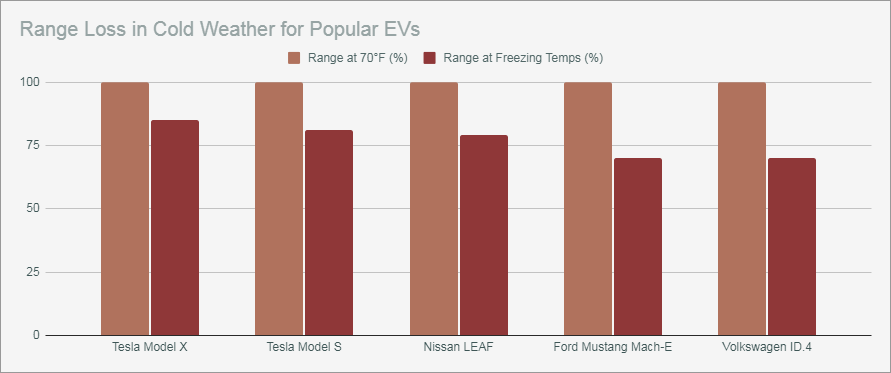
Technological Advancements Enhancing EV Range in Cold
As the popularity of electric vehicles (EVs) continues to surge, so does the push for technological advancements that address their performance in colder climates. From breakthroughs in battery chemistry to software optimizations, the EV industry is relentlessly innovating to ensure that range and efficiency aren’t significantly hampered by chilly temperatures. This section delves into the cutting-edge technologies and strategies being employed to combat the cold weather challenges faced by EVs.
Breakthroughs in Battery Chemistry for Cold Resilience
At the forefront of enhancing EV range in cold weather is the evolution of battery chemistry. Traditional lithium-ion batteries, while efficient, can see reduced performance in colder temperatures. However, recent advancements have led to the development of solid-state batteries and the incorporation of materials like silicon, which promise better cold weather resilience. Companies like QuantumScape are pioneering these next-generation batteries, which not only offer improved cold weather performance but also faster charging times and increased overall lifespan.
Software Updates and Range Optimization
Modern EVs are as much about software as they are about hardware. Over-the-air (OTA) software updates have become a staple for many EV manufacturers, allowing them to introduce optimizations that can enhance range and performance in colder climates. For instance, Tesla’s Version 10.0 software update introduced several optimizations aimed at improving range and battery health during colder months. These software enhancements, combined with real-time data analytics, allow for dynamic adjustments that can mitigate the effects of cold on the vehicle’s range.
Future Innovations in Cold Weather EV Technology
The future of EVs in cold climates looks promising, with several innovations on the horizon. Concepts like battery thermal blankets, which can keep the battery at an optimal temperature, are being explored. Additionally, the integration of AI and machine learning promises to bring about smart systems that can predict and adapt to cold weather conditions, optimizing various vehicle parameters for maximum efficiency. Collaborations between tech giants and automotive leaders, such as the partnership between Apple and Hyundai, hint at the next wave of cold weather EV technologies that could redefine winter driving for EV owners.
Good to Know Fact
Regenerative braking efficiency can also be enhanced with software updates, ensuring that even in cold temperatures, EVs recover as much energy as possible during braking.
Winter EVs: Future’s Bright!
Stay Tuned! With rapid advancements in EV technology, the cold weather range challenge might soon be a thing of the past. The future of winter EV driving is bright and full of potential!

Consumer Experiences with EV Range in Winter
As electric vehicles (EVs) continue to gain traction, understanding the real-world experiences of consumers becomes crucial. Winter, with its unique challenges, offers a different perspective on EV ownership. This section delves into the experiences of EV owners during colder months, shedding light on the practical challenges and solutions they encounter.
Feedback from EV Owners in Cold Regions
Owners residing in colder regions often have firsthand experiences with the challenges posed by winter to EV range. Forums like Speak EV are rife with discussions about range reductions, with many owners noting a decrease of up to 30% during particularly cold spells. However, many also highlight the benefits of pre-conditioning and the effectiveness of thermal management systems in newer models. The consensus is clear: while winter does pose challenges, informed ownership can mitigate many of these issues.
Charging Infrastructure and Cold Weather Challenges
Charging in colder climates presents its own set of challenges. Reduced efficiency of charging stations, longer charging times, and even issues with cable flexibility are commonly reported by EV owners. However, advancements in charging infrastructure, such as Tesla’s Supercharger network, are designed to address these challenges, offering faster charging times even in colder conditions. Still, consumers emphasize the importance of planning, recommending apps like PlugShare to locate reliable charging stations during winter travels.
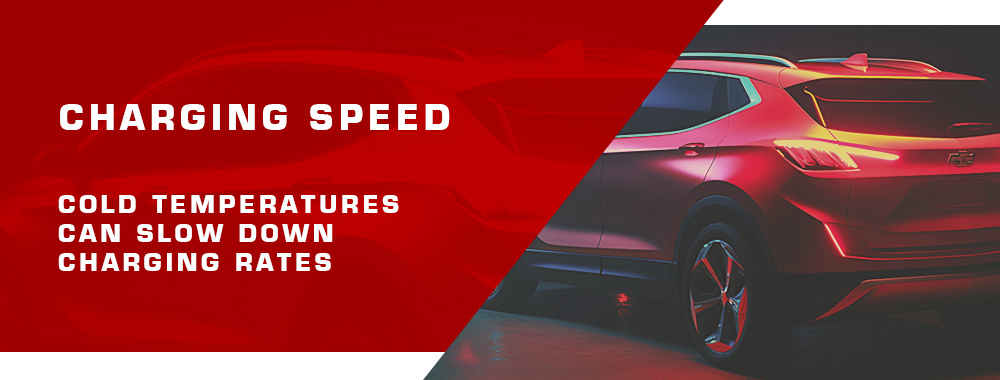
Adapting to EV Range Variations in Winter
Adaptation is a recurring theme among EV owners in colder regions. Many have developed strategies to maximize range, such as reducing highway speeds, minimizing cabin heating, and leveraging regenerative braking. These adaptations, while initially challenging, soon become second nature, with many owners noting that the benefits of EV ownership far outweigh the winter challenges.
Good to Know Fact
Many EV owners recommend investing in a Level 2 home charger. Not only does it offer faster charging times, but it also ensures the battery is kept at an optimal temperature, further enhancing winter range.
Winter EVs: Dive In!
Winter EV Challenge! Join online EV communities to participate in winter range challenges. Share your experiences, learn from others, and discover how to get the most out of your EV in cold conditions!
Conclusion: EV Range in Cold Weather
After a thorough review, we discovered that electric vehicles, despite their groundbreaking nature, aren’t exempt from the challenges colder climates present. Winter introduces distinct hurdles, from battery efficiency drops to issues surrounding the charging infrastructure. With the right technological strides, well-informed ownership, and a hands-on approach, these challenges are surmountable. Our detailed examination revealed that the horizon for EVs in cold conditions is bright, fueled by relentless innovations targeting enhanced range and optimal performance. As we continue to evolve in the industry and gather feedback from our clients, the path for winter EV driving sharpens, setting the stage for a more sustainable and efficient driving experience, irrespective of the weather.
Contents
- 1 Impact of Temperature on EV Range
- 2 Correlation Between Cold Weather and Battery Efficiency
- 3 Thermal Management Systems in EVs
- 4 Role of Ambient Temperature in Energy Consumption
- 5 EV Range Reduction Factors in Winter
- 6 Effects of Heating Systems on EV Range
- 7 Increased Rolling Resistance in Cold Conditions
- 8 Winter Tire Impact on Energy Consumption
- 9 Optimizing EV Range During Cold Months
- 10 Pre-conditioning Strategies for EVs
- 11 Benefits of Insulated Battery Packs
- 12 Driving Habits to Maximize Winter Range
- 13 Comparative Analysis of EV Models in Cold Weather
- 14 Top Performing EVs in Low Temperatures
- 15 Range Variability Among Different EV Brands
- 16 Real-world Test Results of EVs in Winter
- 17 Technological Advancements Enhancing EV Range in Cold
- 18 Breakthroughs in Battery Chemistry for Cold Resilience
- 19 Software Updates and Range Optimization
- 20 Future Innovations in Cold Weather EV Technology
- 21 Consumer Experiences with EV Range in Winter
- 22 Feedback from EV Owners in Cold Regions
- 23 Charging Infrastructure and Cold Weather Challenges
- 24 Adapting to EV Range Variations in Winter
- 25 Conclusion: EV Range in Cold Weather

Living in Minnesota, the cold’s a real issue for my EV. Just last week, I noticed a 30% drop in range. Had to rethink my entire commute. It’s a tough pill to swallow, but I’m hoping tech advancements will help. Anyone else braving the cold in their EV?
Just read about the 25% range loss at 70 mph in cold weather. That’s significant, especially on highways. I love my EV, but this makes long trips nerve-wracking in winter. Does anyone have tips for maximizing range when the mercury drops?
Preconditioning your car while it’s still plugged in helps a lot. Also, try using seat heaters instead of the cabin heater when possible – they use less energy. And of course, driving slower helps preserve range too.
As a tech enthusiast, I’m curious about the software solutions EV makers are developing for cold weather. Temperature management systems are getting smarter, but how much can they really mitigate range loss? Would love to hear from others following these innovations.
I’m considering an EV, but living in a colder region, I’m concerned about the added cost of more frequent charging in winter. Do the savings on gas still outweigh the cons for those in similar climates?
Absolutely. Even with the increased charging in winter, my overall costs are still lower than fueling a gas car. Plus, there’s the benefit of home charging overnight. Just need to plan a bit more for longer trips.
Planning a ski trip with my Tesla Model Y, but the 30% range reduction has me second-guessing. I don’t want to spend my vacation time charging. Has anyone tackled long, cold trips successfully in their EV? Any advice?
The range drop in winter is a reminder of how dependent EVs are on external conditions. I’m all for green transportation, but we need to be realistic about these challenges and address them, not just for convenience but for wider adoption.
I’ve found that keeping a close eye on tire pressure during colder months helps with range. Low pressure means more resistance and more power used. It’s a small thing, but every little bit helps. Other small tips folks have come across?
Does anyone know if the newer EV models are showing any improvement in cold weather performance? I’m hoping to upgrade soon and would love a car that handles winter better.
Newer models are definitely getting better. More efficient heat pumps, improved battery chemistry, and better insulation are all helping. It’s not perfect yet, but the progress is encouraging.
I love the silence of my EV, but in winter, the range anxiety gets loud. I’ve started carrying an emergency kit with blankets, food, and a portable charger, just in case. Maybe it’s overkill, but better safe than sorry, right?